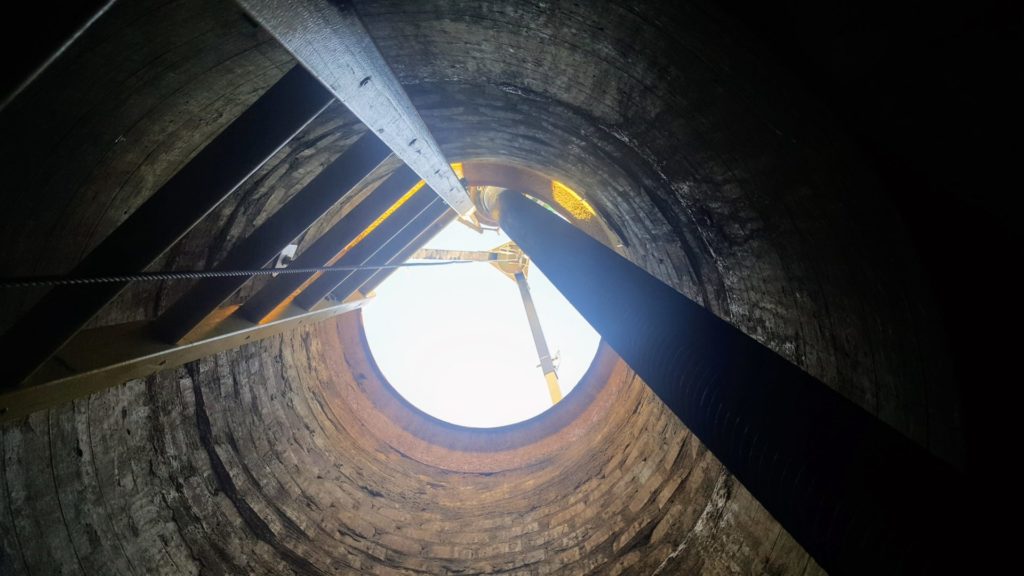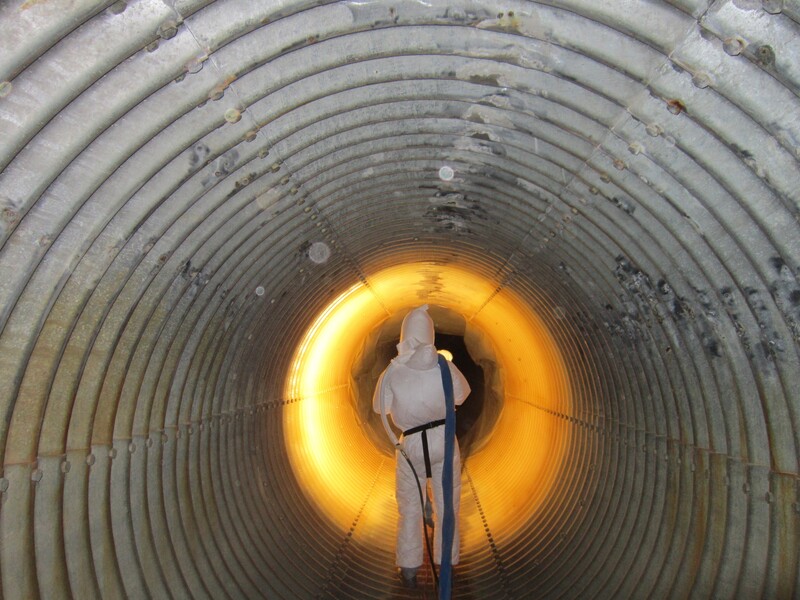Manhole Rehabilitation Through Polyurethane Coatings
Manhole repair and rehabilitation projects are some of the biggest challenges presented to municipalities across the country.
In fact, miles of collection system sewer lines that have received trenchless rehabilitation are co-dependent on manhole rehabilitation to truly have a successful municipal asset renewal program.
Such programs and projects translate to a lot of money and time invested by sewer ratepayers and taxpayers, so it’s crucial to get it right the first time, with a sustainable, long-term solution.
Every year, municipalities are faced with deteriorating manholes that threaten the asset integrity and operational efficiency of public sewer systems. This deterioration causes infiltration and inflow (I/I), that can result in structural infrastructure failure, road damage, and other issues that can be frustrating for local residents and infrastructure asset managers alike.
However, there’s hope! Polyurethane linings help to seal underground infrastructure like manholes, to combat I/I, corrosion, and deterioration while increasing their structural strength.
The Problem

Sanitary sewer system manholes are most commonly constructed of clay brick, concrete block, or precast concrete; clay brick being the most common infrastructure material used in older cities. The cement mortar joints between the brick layers shrink and degrade over time.
Even concrete manholes take damage from a few different sources, either to the concrete body itself or more likely, the cementitious mortar between precast manhole sections. If maintenance is ignored or deferred, they experience decay, losing grout over time, and generally degrading to the point where bricks loosen, shift, and even fall off of the manhole walls.
Additionally, concrete manholes are damaged through a process called microbial-induced corrosion (MIC), which involves complex microbiology and subsequent chemical reactions.
Due to wastewater flow turbulence, organic-rich wastewater, and just the right mix of aerobic and anaerobic conditions, hydrogen sulfide gas is naturally generated in the sewer collection system, which then accumulates in concrete pore spaces by gaseous diffusion and absorption. As pH levels continue to drop due to these processes, an acid-producing bacteria forms and converts the hydrogen sulfide gas to sulfuric acid.
MIC is then caused by the production of sulfuric acid and other acid-producing bacteria that attack the concrete surface of a manhole, chemically changing the concrete to a byproduct that is gypsum.
Altogether, these factors pose a financial and safety hazard to the community.
It’s crucial that municipal asset leaders and their infrastructure contracting crews address these issues with effective treatments early so that a complete manhole replacement is not needed.
One particularly effective solution is utilizing polyurethane coatings to seal, rehabilitate, and strengthen the concrete or brick manholes.
Polyurethane Sewer Liners
Polyurethane linings are ideal solutions for manhole repair and restoration projects.
When they’re sprayed within the manhole, they cure to the exact shape of the structure, sealing off the concrete and providing a layer of defense against microorganisms and harsh sewer gasses.
They are incredibly strong, durable, and resistant to corrosion due to their physical and chemical properties.
In fact, polyurethane liners like SprayWall® are scientifically proven to increase the structural integrity of underground infrastructure.
This means that manholes treated with polyurethane linings will be protected from both corrosion and underground compression and tensile forces, greatly increasing their service life and reducing the chance of premature failure.
Different manhole restoration projects require different solutions and processes, so it’s important to speak with a polymeric lining company that has proven expertise.
Polyurethane and hybrid polyurethane liners are now becoming more widely used, due to their proven success in recent decades. However, manholes being treated with spray polyurethane linings need certain conditions for application success.
For example, the substrate surface needs to be clean and dry to the manufacturer’s standard so that the product can cure without complications. Additionally, spray polyurethane coatings require specially-trained personnel for installation.
Thankfully, companies like Sprayroq™ work with certified partners that go through rigorous testing and training, so public works directors and contractor crews alike can be confident that they’re bringing in a true expert to handle the task at hand.
How the Manhole Repair Process Works
Spray-applied polyurethane linings are used in manholes to reinstate structural integrity and provide chemical resistance against corrosion.
The manhole rehabilitation process happens by lowering a certified partner into the manhole, where they’ll carry out all the preparation and application processes as per their training by Sprayroq™.
First, the manhole is cleaned using a power washer. This rids the concrete of microorganisms and built-up debris that could jeopardize the success of the installation.
Next, the manhole is dried to the allowable moisture content. It’s important to have an installation space that is within the moisture tolerance so that the polyurethane contacts the substrate without excessive moisture interference.
Finally, the polyurethane lining applicator spray-applies the product to the manhole, where it seals and strengthens the structure for decades.
Spraywall® gels in 8-10 seconds after spraying, reaching a tack-free state within 2 minutes and returning to service when the polyurethane cools to ambient temperature. This quick return to service time can be as soon as 30-45 minutes after the spray application.
The whole operation, from substrate preparation to final QA/QC testing, can be completed in just a few working days, minimizing traffic disruptions and saving municipalities time and money.
It’s important to choose a proven product like SprayWall®, which follows a 50-year design protocol and will last upwards of 50 years. This will mean less recurring maintenance for both asset owners and municipal leaders.
SprayWall® Defends Manholes from Corrosion and Deterioration

Underground infrastructure components like manholes are vital to our everyday functions, so it’s important that we keep them protected.
Trenchless repair methods like sprayed polyurethane linings are proving to be a superior solution when applicable, as they save communities time and money through long-lasting solutions and minimal disruptions.
Our SprayWall® Polyurethane Lining System is especially effective at not just sealing damaged manholes, but increasing their structural integrity.
SprayWall® is minimally invasive and saves engineers, contractors, and communities their time and money.
It cures in minutes, and reaches its final design strength within 72 hours, with a designed service life of over 50 years. Whoever works on the project will likely be in retirement by the time further repairs are being discussed.
Have questions about SprayWall® or want to learn more about becoming a Sprayroq™ Certified Partner?
Contact us, and let’s work together to keep underground infrastructure protected for decades to come.

